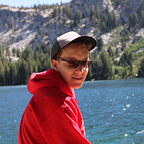“More People, More Scars Upon The Land”: the Imperative of Addressing American Land Use in the Age of the Capitalocene
As climate change continues to worsen and the impacts increase in magnitude, the need to address structural frameworks embedded within the public consciousness only gains in its gravity. Land use policy, in particular, has not seen the widespread contestation I believe it deserves, and the way that people are dispersed warrants addressing. As of 2024, metropolitan areas house approximately 83% of the US population, with the rest residing in rural areas. The American population is ever-growing: even with below-replacement fertility rates, migration continues to push the population upwards. Cities are growing in Capitalocene America, but no neighborhood type has grown as fast as suburbs. More importantly, since suburbs are still frequently categorized as urban areas, a majority of Americans (52%) live in suburbs.
The movement and spatial distribution of people in America’s growing cities and suburbs has devastating environmental consequences. Environmental humanities theorists posit this day and age as the “Capitalocene”: an era in which our world-ecology is fundamentally dominated by capitalistic human relations as opposed to geological forces. The suburban lifestyle is holistically unsustainable in how land is used and connected. Suburbs emit significantly more CO2 than cities. For instance, an average household in the Montclair suburb in Essex County, New Jersey emits nearly double that of an average household in New York City. Larger homes tend to use more energy and strain the electric grid more than smaller homes.
However, the biggest issue with constructing suburbs and furthering urban sprawl is the mobility implications fueled by spatial mismatch. America is currently witnessing a boom in super-commuting in which individuals–most of them solo drivers–travel over 90 minutes to get to work. Suburbs worsen this issue in the modern American city, where there is a noticeable spatial mismatch between residential and workplace locations. Job clustering is much less common, and the proliferation of suburban office parks has resulted in longer commute times, as employees tend to reside farther from centralized work locations. Accordingly, the average commute time increased by 2.7 minutes between 2005 and 2019. Racial segregation, prompted largely by housing policies in the mid-20th century, has exacerbated these challenges for minority groups, especially Black Americans. Minorities not only tend to live further away from high-paying jobs but also often have worse transit service to serve them.
It’s no coincidence that 64% of Americans don’t feel a sense of belonging in the workplace, and 74% don’t find a sense of belonging in their local community. The root of the words “ecology” and “economics” is the Greek word oikos, roughly referencing the interrelations between individuals that constitute one’s home. Through the isolation of the concept of “home,” suburbs break down the essence of oikos by distancing people from fulfilling relationships with others and with nature. The famed singer-songwriter John Denver once famously sang the lyric, “more people, more scars upon the land,” in his classic song “Rocky Mountain High.” To this warning I urge policymakers to heed his call not as a directive to curb population growth but to consider the scars that population growth leaves. With urban sprawl and population growth, we are seeing the dangers of building in the wildland-urban interface with increased wildfire risk. Counties in Metropolitan Atlanta now face myriad challenges of forest fragmentation due to unsustainable, sprawling development.
Land use change is one of the greatest threats to the effort to combat climate change. Experts warn that failing to address the challenges posed by deforestation, sprawl, and suburbanization in society could result in emitting upwards of 70 gigatons of extra CO2 by 2050. Conversely, the push for universal population densification is equally dangerous. The urban heat island effect — the idea that urban cores see higher temperatures than surrounding development — is real and is responsible for altering weather patterns and increasing ozone levels. Population growth in urban city centers has to be “contained” to a degree for people to live comfortably. For decades, American city planners have committed to sprawling people outwards rather than bringing people closer together.
The nexus of the solution will fall between the intersection of spatiality and mobility. Spatial mismatch–the discrepancy in proximity to jobs from homes–should be minimized, but density comes at an environmental cost beyond the heat island effect. Capitalocene urbanization poses equally damaging threats to wildlands and “green space” as suburbanization does. The coexistence of humans and nature is not a certainty, and this compatibility is far more difficult in a modern megalopolis. Deified urban oases like Central Park in New York City have nearly all been reactionary projects constructed with the intent to be havens for the new settlers (capitalists) of a city, displacing others in the process. New green space is not a replacement for permanent, already extant ecology. To sustainably connect individuals to jobs and the surrounding nature in the Capitalocene, we must bridge the gap between home, work, and leisure.
